ROM testing is essentially "muscle-length" testing (although fascia, tendons, and ligaments can also come into play). The following examples reveal muscle shortening or hypermobility that underlie much pain and dysfunction. Their impact is commonly disregarded in favor of diagnoses based on nerves and organs. Yet our 600-some muscles make up the largest "organ" of the body.
Considering muscles does not dismiss neurological issues. The two are intimately related. Muscles commonly entrap the nerves passing through them. Nerves, in turn, may produce painful or frightening symptoms (including slowed or altered responses to neurological tests) without being the origin of the problem. Check muscles! If you cannot rotate or tilt your head by at least 45 degrees, if you cannot point the tip of your closed jaw at the ceiling or touch it to your chest, you may have found the a myofascial origin of many severe headaches, including and frightening neurological symptoms including nausea, dizziness, and more.
Material below is excerpted with commentary from our Range-of-Motion (ROM) Testing charts. See also tests for shoulder problems.
Cervical and Masticatory Tests
Head pain of muscular origin (including that commonly diagnosed as
"sinus" and "migraine") comes primarily from the neck. Muscles shown in
bold type are the ones most likely to inhibit a specific motion.
Cervical Rotation
Test Levator Scapula With patient sitting on hands or
holding seat of chair, Note: Levator scapula, especially in combination with
trapezius, is the leading cause of a "stiff" or "crick" neck. Even
where pain is not present, inability to turn your head fully to
the side to check for oncoming cars is a potentially
life-threatening condition. Cervical Lateral
Flexion Test Trapezius
Substitution: Tilting to side, raising shoulder to meet
ear rather than lowering ear to shoulder. Have patient hold chair
seat or sit on hands to stabilize shoulders. Note: Some patients have virtually no lateral movement and
are quite surprised that an ear should be able to come anywhere
near a shoulder. This restriction is common, but it is not
"normal." Those who have it are likely to suffer tension or
migraine headaches with a typical "fishhook" pain pattern.
Suboccipitals
Substitution: Dropping open jaw to chest.
Dropping neck straight forward from C7, then flexing
neck. Infrahyoids
With mouth firmly closed (teeth
touching),
Substitution: Patient allows mouth to open.
Scalenes To relieve current scalene pain or to counteract any
pain created by the Scalene Cramp Test (below),
Scalenes This test is essentially the same as playing the
violin. It is used to reproduce suspected scalene pain or
dysfunction. Use with caution: it may also distress a bulging disc
or compromised facet joint on the side being tested. Discontinue
test if cervical pain increases. Do not test through pain. Use with
caution when patient has tender spinous processes in the cervical
spine.
Opening and Closing Test
Masseter
Repeat this test supine to eliminate postural
muscles. 2-Knuckle Test
Masseter
Referral zones of the sternocleidomastoid and
trapezius perpetuate TrPs in masticatory muscles. See Cervical
Lateral Flexion Test and Cervical Rotation Test.
Splenius Cervicis
Splenius Capitis
Scalenes
Sternocleidomastoid
Trapezius 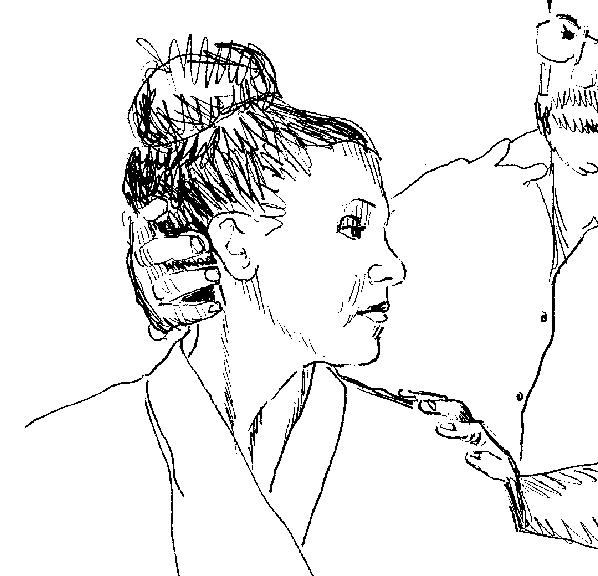
Scalenes
Sternocleidomastoid 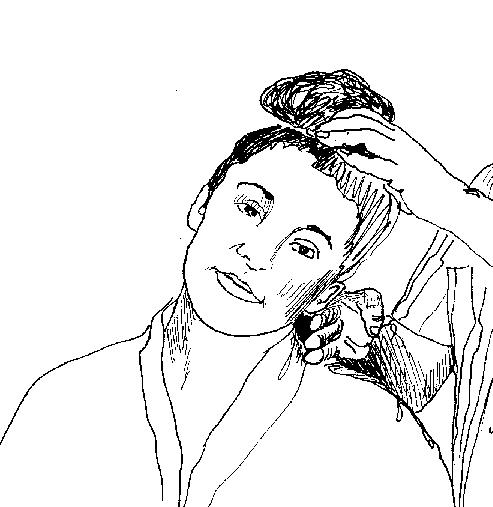
No
restriction: Ear to shoulder.
Restriction:
Unable to reach shoulder with ear.
Cervical
Flexion Test
Splenius Capitis
Splenius Cervicis
Sternocleidomastoid
Paraspinals
Semispinalis
Capitus
Semispinalis Cervicis
Trapezius 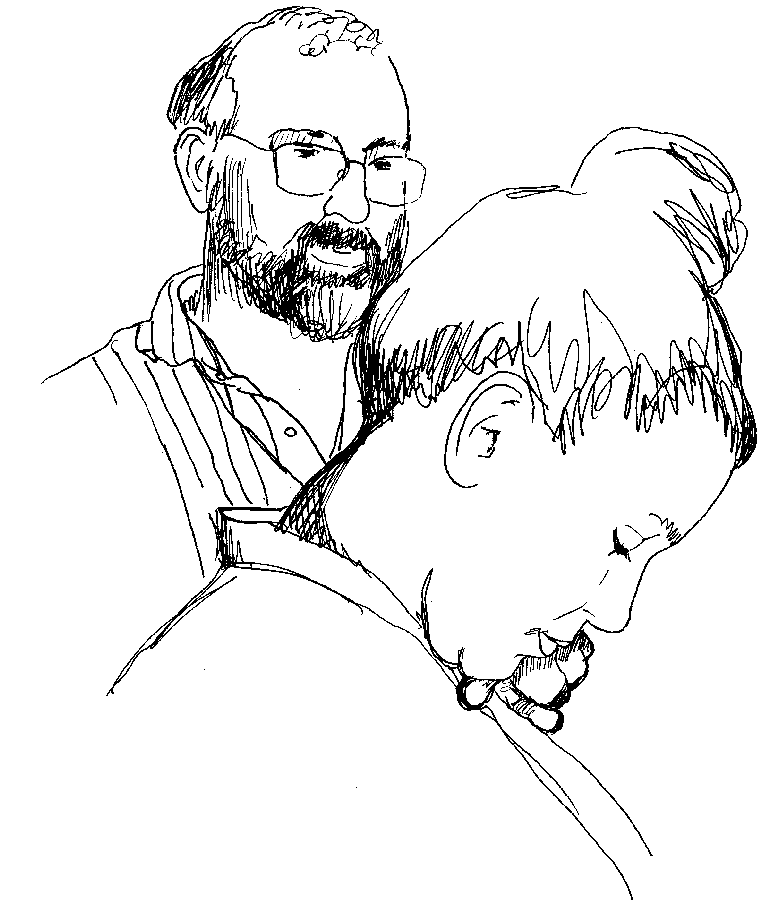
No restriction: Chin touches
chest.
Restriction: Cannot reach chest
with chin. For deep cervical paraspinals, do Flat Back
Test.
Note: The muscles that restrict this motion are
commonly involved in brutal head and neck pain commonly diagnosed
as "occipital neuralgia," "tension and cervicogenic headache," and
"chronic intractable benign headache." They may be fired off by
such everyday actions as watching TV with head proppred on elbows
and wrists or by bi- or trifocals that require holding the head in
a set position to focus.
Cervical Extension Test
Suprahyoids
Digastric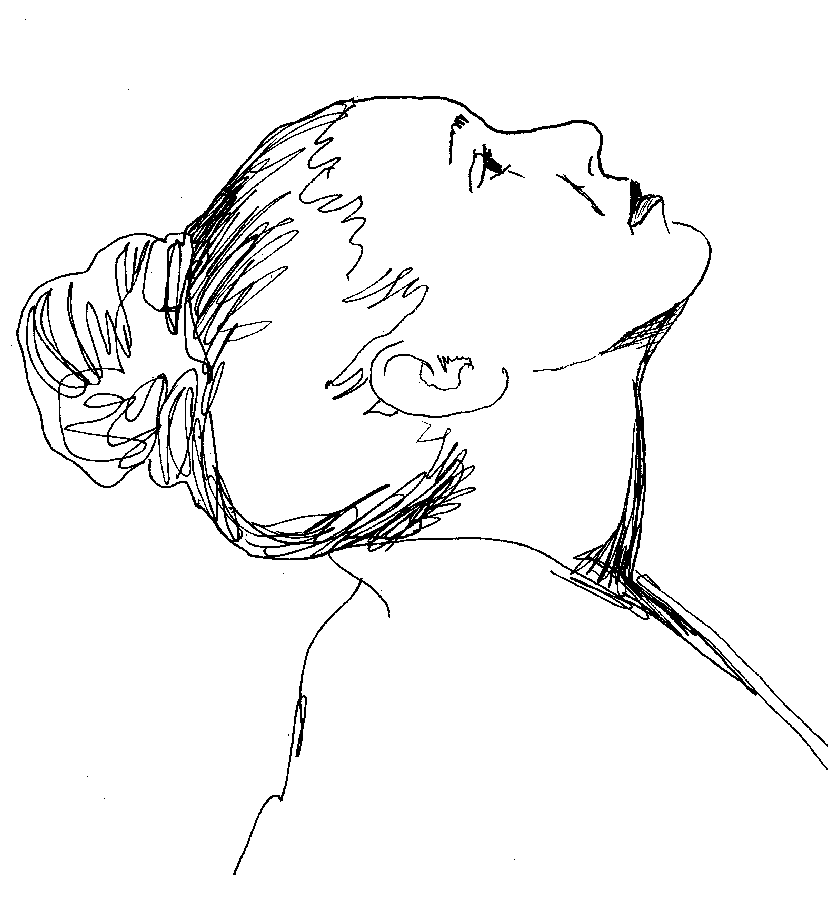
No restriction: Able to look straight up without
pain.
Restriction: Unable to extend fully or
without pain.
Note: These muscles are commonly injured
in whiplash and vehicle accidents. Pain may refer to eye, ear,
neck and cause difficulty opening the mouth or swallowing.
Scalene
Relief Test
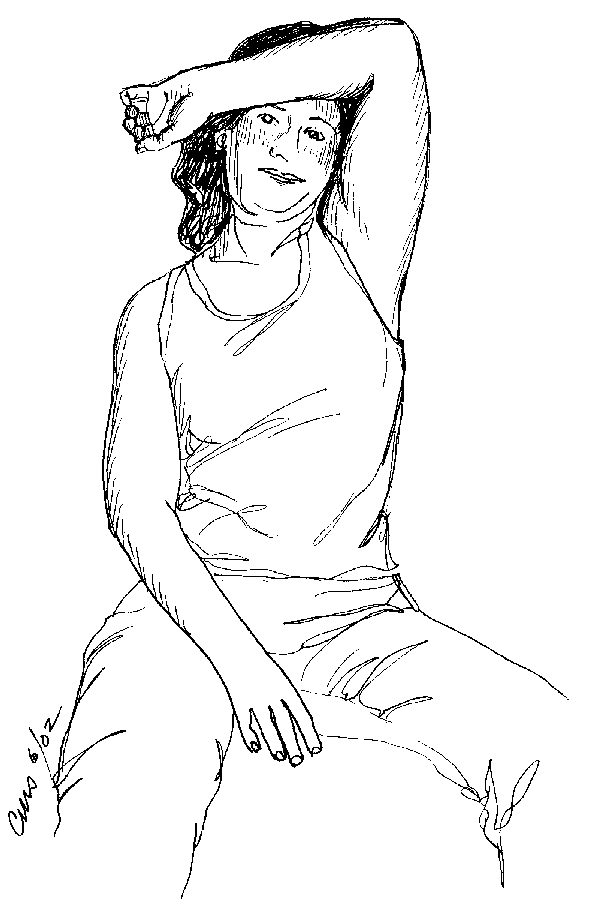
No restriction: No
change.
Restriction: Decreased scalene pressure
on brachial plexus results in decreased pain.
Scalene Cramp
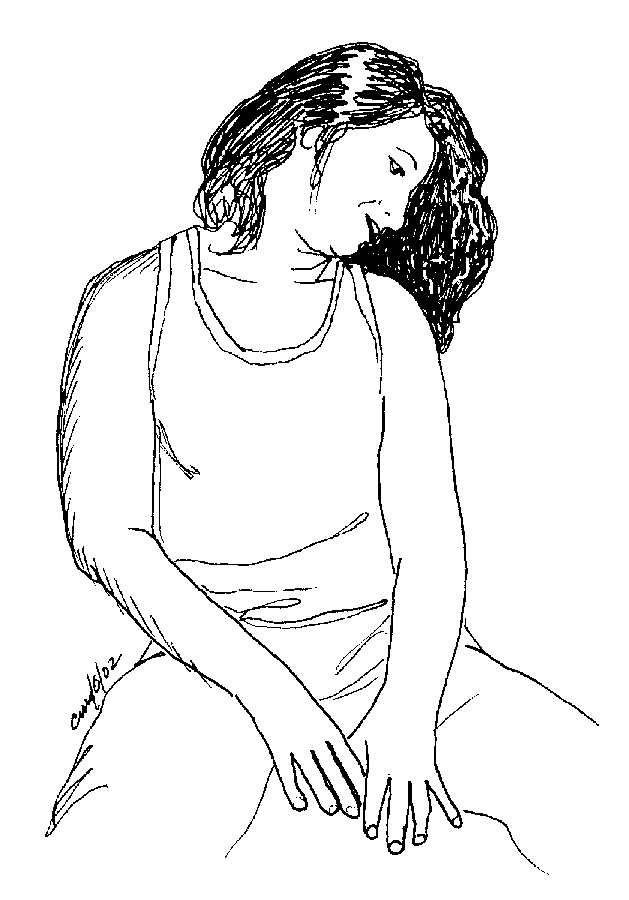
No restriction: No
change.
Restriction: Pain or tingling may appear
in scalene pain reference areas: chest, back, fingers. Follow
immediately with Scalene Relief Test, above.
Temporalis
Pterygoids
Digastric (posterior) 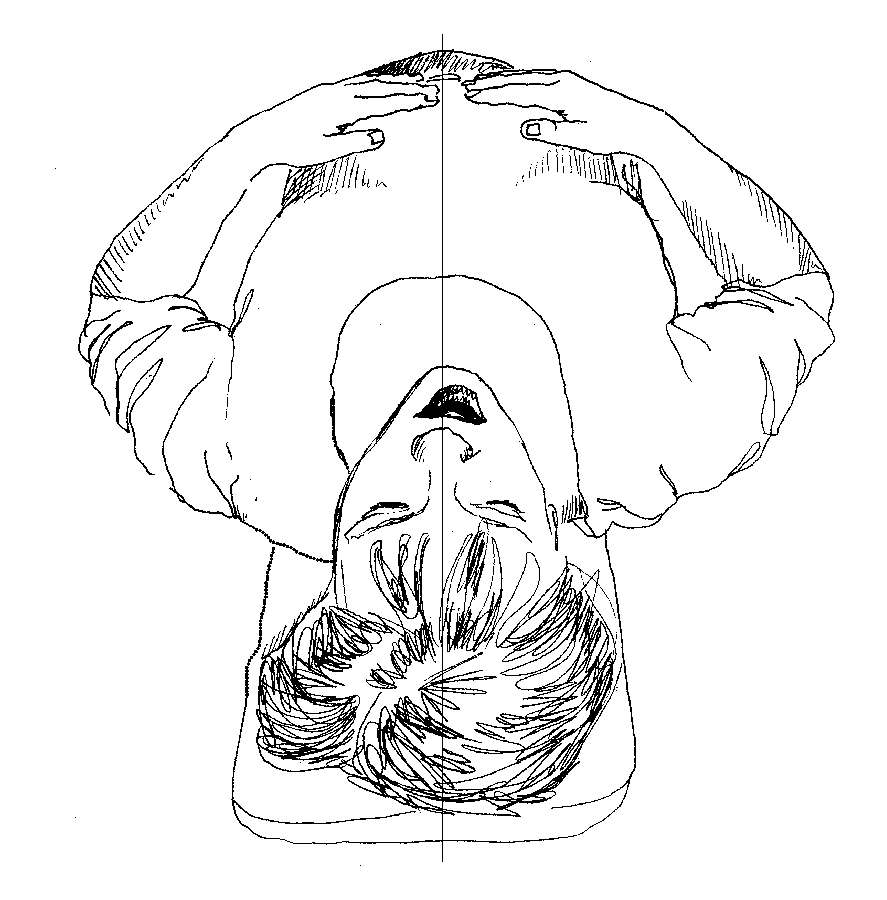
No restriction: Jaw opens widely, closes
smoothly and evenly, with no sound.
Restriction:
Jaw deviates to side or produces a narrow
opening.
Note: Muscular dysfunction is a far more
common cause of TMJ dysfunction than the joint itself. Surgery is
RARELY the best initial treatment. After all, it is the muscles
that move the joint in a balanced, even manner -- or not. Check
muscles and correct dysfunction before damage to the joint capsule
does occur.
Temporalis
Pterygoids
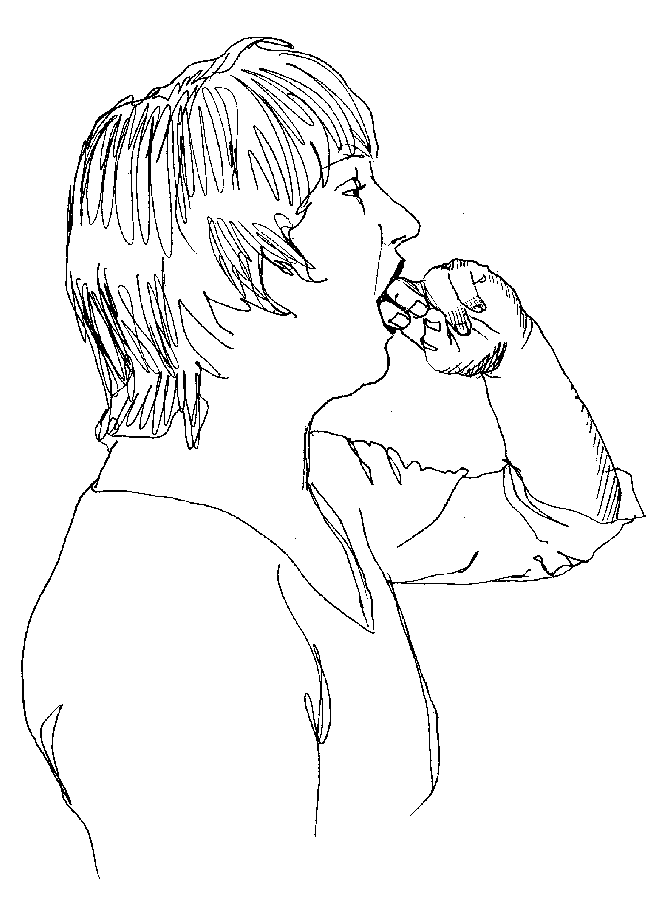
Restriction: Tight masseter and
temporalis restrict or deviate jaw opening. See Opening and
Closing Test.
Hypermobility : Suggested by three or
more fingers.